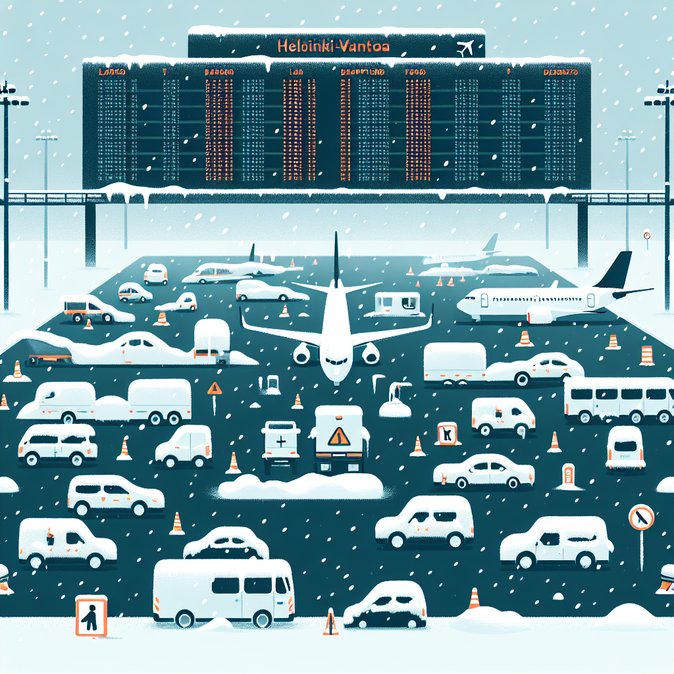
Early-season snowfall snarled operations at Helsinki-Vantaa Airport on 25 November, forcing airlines to cancel 27 flights and delay 281 others, according to VisaHQ’s real-time operations tracker. Finnair scrapped services to Göteborg, Kittilä, Vilnius and New York, while its evening JFK departure eventually left more than five hours late.
The disruption stems from an unusual combination of heavy, wet snow and staffing shortages. Although Finavia prides itself on rapid runway clearance, de-icing queues stretched beyond 40 minutes as carriers struggled with leaner post-pandemic rosters. Climate scientists say Finland is seeing heavier snowfall earlier in the season, placing extra stress on maintenance schedules at the very moment airlines are still rebuilding crews.
![Heavy Snow Triggers 27 Cancellations and 281 Delays at Helsinki-Vantaa, Testing Finland’s Winter Resilience]()
Finavia activated its Airport Operational Status (AOS) mobile app, pushing live gate-change alerts and directing stranded passengers to the new Quiet Room near Gate 37—an initiative that received its first large-scale test during the storm. Airport restaurants extended hours, and taxi companies agreed to honour fixed-fare vouchers for missed rail connections.
For business travellers, the takeaway is clear: even in snow-savvy Finland, itinerary buffers are prudent. Mobility teams routing executives through HEL this winter should monitor AOS feeds and consider booking mid-day rather than late-evening connections when de-icing backlogs peak. Cargo planners shipping critical components for Lapland mines or Oulu tech plants may also want to shift high-value loads onto earlier flights or ice-class ferries when a red weather warning looms.
Finavia says it will review capacity planning after the incident, including the feasibility of a third de-icing pad and automated glycol recycling to speed turnaround while meeting environmental rules.
The disruption stems from an unusual combination of heavy, wet snow and staffing shortages. Although Finavia prides itself on rapid runway clearance, de-icing queues stretched beyond 40 minutes as carriers struggled with leaner post-pandemic rosters. Climate scientists say Finland is seeing heavier snowfall earlier in the season, placing extra stress on maintenance schedules at the very moment airlines are still rebuilding crews.

Finavia activated its Airport Operational Status (AOS) mobile app, pushing live gate-change alerts and directing stranded passengers to the new Quiet Room near Gate 37—an initiative that received its first large-scale test during the storm. Airport restaurants extended hours, and taxi companies agreed to honour fixed-fare vouchers for missed rail connections.
For business travellers, the takeaway is clear: even in snow-savvy Finland, itinerary buffers are prudent. Mobility teams routing executives through HEL this winter should monitor AOS feeds and consider booking mid-day rather than late-evening connections when de-icing backlogs peak. Cargo planners shipping critical components for Lapland mines or Oulu tech plants may also want to shift high-value loads onto earlier flights or ice-class ferries when a red weather warning looms.
Finavia says it will review capacity planning after the incident, including the feasibility of a third de-icing pad and automated glycol recycling to speed turnaround while meeting environmental rules.









